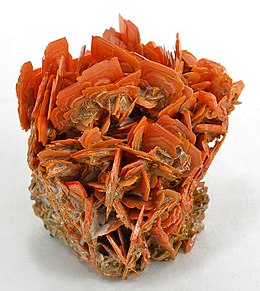Sapphire is a precious gemstone of the mineral corundum, an
aluminum oxide. Sapphire is typically
blue, but natural “fancy” sapphires can be yellow, purple, orange and green, or
“parti sapphires,” which are two or more of these colors. The only color sapphire can’t be is red
because red corundums are rubies. The variety
in color is from trace amounts of iron, titanium, chromium, copper, or
magnesium.
This beauty is the Logan Sapphire and it weighs 423 carats - Wikipedia
Sapphires are usually cut and polished into gems and worn as
jewelry although they can also be used in wristwatch crystals, high-durability
windows and thin electronic wafers among other things. Sapphire, like ruby, is also a 9.0 on Mohs scale of hardness.
A cut and polished sapphire gemstone - Wikipedia
Sapphire is graded like other gemstones, as mentioned
before, by color, cut, clarity and carat weight. The color of gemstones can be described in
terms of hue, saturation and tone. Hue is
the “color” of the gemstone. Saturation
is brightness of the hue and tone is the lightness and darkness of the hue.
A beautiful teardrop cut sapphire - Wikipedia
Green or gray lessens the hue considerably and also the
value. Ideally it’s best to have violet
or purple contribute to the intensity of the blue color of sapphires.
Here’s an interesting tidbit about parti sapphires. Australia is the largest source of particolored
sapphires. These aren’t typically used
in jewelry so are relatively unknown. Particolored
sapphires cannot be created synthetically and only occur naturally.
A padparadscha sapphire - Wikipedia
Naturally formed pink-orange corundum is very rare. This type of sapphire is called Padparadscha. This name comes from the name for the lotus
flower as this is much the same color. These
stones are often from Sri Lanka. Orange
gems are often higher in price than the highest quality blue sapphire. Because of heat treatment called lattice
diffusion, more of these orange gems are being seen in the marketplace, but the
naturally occurring ones are the most valuable.
Star sapphire - Wikipedia
The star sapphire exhibits a star pattern when viewed from a
single overhead light source. This star
is due to rutile inclusions in the stone when it was formed. As discussed earlier, rutile is titanium
dioxide. These gems are generally cut
into cabochons (flat on the bottom) and mounted that way with the star facing
outward. The red stones like this are
called “star rubies.”
Sapphire is the birthstone for September and also the gem
for a forty-fifth anniversary.




















































